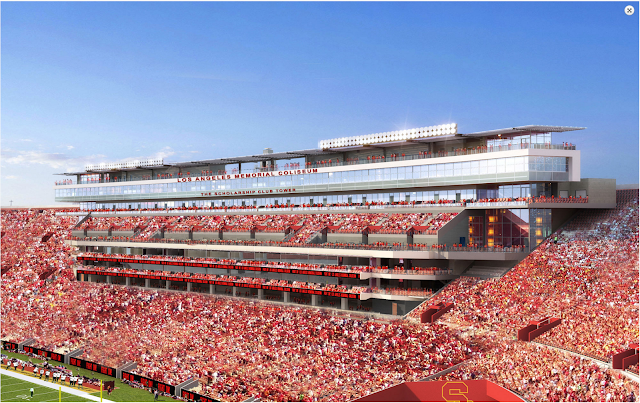Placemaking LA
Mayor Garcetti’s recently announced Great Streets Initiative got me thinking about how Los Angeles uses its streets compared to other urban cities. While the region has some long, important thoroughfares (Wilshire, Sunset, Figueroa, and PCH immediately come to mind), few would argue that they are on the same level of the Champs Elysees or the Mall in Washington DC. LA’s major boulevards often have great settings and go through interesting neighborhoods, but an important ingredient that makes streets great is missing - place. Like pretty much any public problem, both the public and the private sectors are to blame. Let’s look at where they’ve fallen short and what they can do to improve our streets:
 |
| More of this. |
The Public Sector
- Lack of public space. Look at Wilshire, Sunset, Figueroa, and Pacific Coast Highway on google maps and you’ll see that these 4 major thoroughfares combined have only 2 major parks along their entire stretch - MacArthur Park on Wilshire and Exposition Park on Figueroa. Sunset Blvd runs blocks from Griffith Park and Runyon Canyon, two of the city’s best natural resources, but these parks aren’t well integrated from the street. Most of the park-like areas along these streets are reserved for private golf courses.
- Lack of monuments. LA has very few public monuments in the middle of its streets and has an aversion to roundabouts. Although something like a Revolutionary War memorial would be inappropriate for the area, a WWII monument in the middle of a roundabout on PCH would make sense, given the region’s importance during the war. Trading gifts between countries, like Cleopatra's Needle or the Statue of Liberty, doesn’t seem very common today. However, a gift exchange with Japan or South Korea could help build goodwill and create a new landmark for the city.
- Lack of pedestrian scale. The 4 streets mentioned above are all designed as vehicular arteries for the region. Each of these streets stretch to be 6 lanes wide and PCH is an actual highway for stretches. Although many of the world’s great streets are wide, a road diet could encourage people to cross the street and walk around more.
The Private Sector
- Lack of interesting/coherent architecture. For every Cineramadome or Wilshire Grand, there are 10 boring strip malls. Developers tend to value engineer their projects and avoid interesting architecture unless they are pushed by the public.
- Insular focus on buildings/projects. Developers often treat their projects as if they are Disneyland; they try to get people onto their property and keep them there for as long as possible. This disregards the rest of the neighborhood and often creates spaces that seem public but are actually private (such as The Grove and LA Live).
- Strong desire to retain the status quo. LA’s obsession with traffic and parking has made it extremely difficult to create changes without major pushback from local neighborhoods. While locals should have a say about what gets built in their backyard, they too often have selfish, short-sighted views that place their property values before the greater good of the region.
| Less of this. |



Comments
Post a Comment